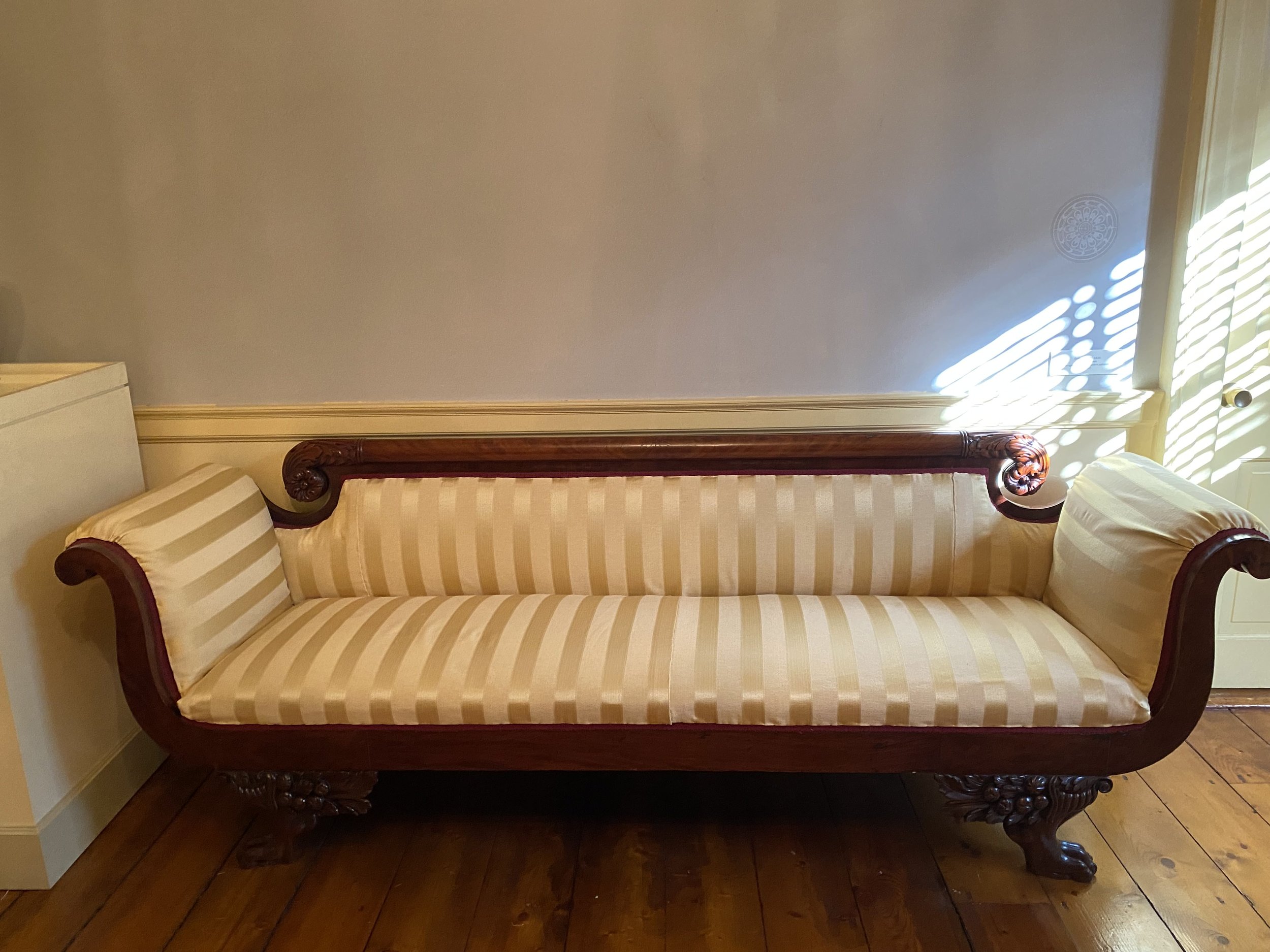
Home Furnishings
The American interpretation of ancient taste consisted of symmetry, straight lines, and minimal decoration inspired by ancient Roman and Greek design. Psychology of the day taught that people were strongly influenced by the environment around them, so simplicity of ancient design was supposed to both reflect and inspire a simple, honest, “American” citizen. It was no coincidence that Founding Fathers wanted an interpretation of ancient design to become the fashion adopted by the new United States.
George Washington knew that he had a rare opportunity to set the foundation for American design, and sought the advice of his colleagues, and asked a mutual friend of his and Rufus King, the diplomat Gouverneur Morris for advice on buying porcelain for the White House:
“It is of very great importance to fix the taste of our Country properly, and I think your Example will go so far in that respect. It is therefore my Wish that every Thing about you should be substantially good and majestically plain; made to endure.”
Rufus King followed this same philosophy when furnishing his own home. You can see the ancient influence in the chairs in his and Mary’s portraits, based on chairs used by Roman magistrates.
Sofa (1820-1830, maker unknown)
This sofa has many elements found in classical design that re-emerged in popularity in the first quarter of the nineteenth century. By the 1820’s and 1830’s, a style called the Greek Revival became popular in America. As opposed to directly copying classical models like the earlier neoclassical style, the Greek Revival took elements of ancient Roman and Greek design. Furniture featured ancient motifs such as acanthus leaves, the mythical animal the sphinx, as well as stylized garlands of flowers and plants called festoons and laurel wreaths.
This sofa takes inspiration from ancient Greece. Its shape is linear and simple, reflecting architecture and furniture forms found in Greek antiquity. Although the backboard’s wood is plain and smooth, its form ends in a noticeable Greek motif; the acanthus leaf, carved and curling on each end. The wooden feet on each side of the sofa are carved like a lion's paw, another popular motif in Grecian design. They are each attached to a sculpted triangular cornucopia horn laying on its side. Cornucopia translates to “horn of plenty” which according to Greek mythology was how the god Zeus was fed as a baby.
Compare and contrast the motifs on the leg and backboard details with those of ancient Greek and Roman decorative objects.
Activity: Design Your Own 19th-century Sofa
Click on the button below to download a coloring page and try your hand at designing a sofa for Rufus and Mary’s home! Remember, early 19th century people liked straight lines and simple decorations. But they still enjoyed bright colors — Mary’s dining room was painted bright yellow!







